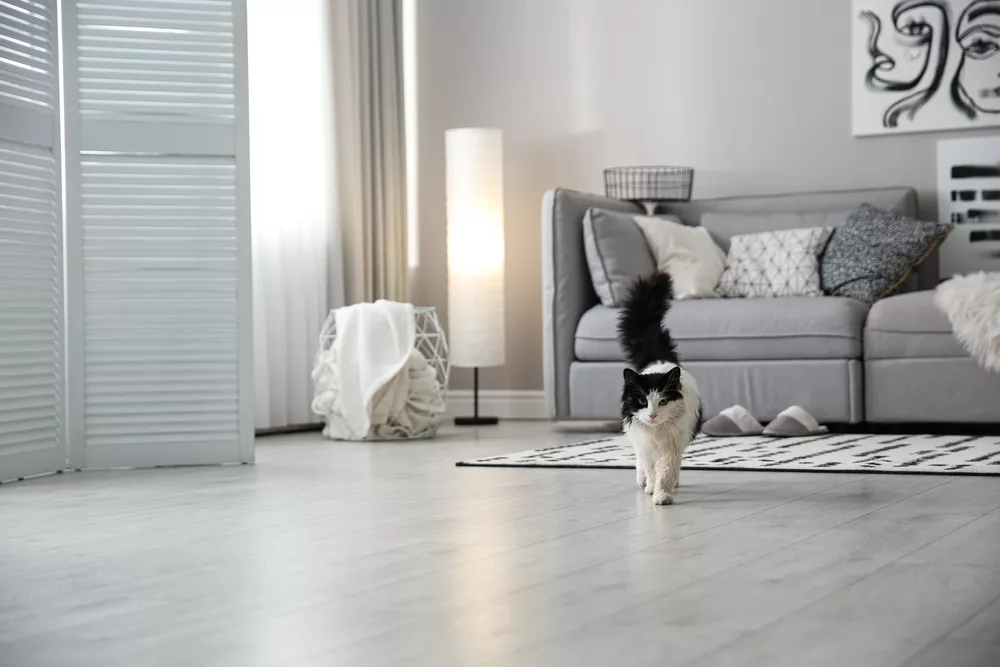
Recently I’ve been watching “Only Murders in the Building.” One of the initial episodes features a scene where Bunny, the co-op board president holds a building meeting to honor a resident who has passed away. Having lived in an Upper East Side co-op back when I was a city girl, I can tell you that the characters are spot on. Eager beaver residents arrive early and sit in the front row wanting any building news to literally fall on them first. More mature residents saunter in searching for the snack table and curling their lips once they see the meager offerings. Finally, anyone with an actual agenda item is flitting about, working the room like a politician. It doesn’t take long for this intended memorial service to devolve into a side service for a resident’s cat who recently passed. Apparently, the deceased human was not a popular guy in the building. Bunny starts to lose all control of the meeting as the residents ultimately become more concerned with where the deceased cat is now – the basement, the trash chute, or in someone’s freezer. Anyway, you’ll have to watch the rest on your own time.
Before packing up my family and moving to New Canaan, we lived in a handsome coop building on the Upper East Side of New York City in the Carnegie Hill area. Our apartment was in a classic pre-war building. A solid limestone exterior was accented with shiny brass and glass doors. Well-dressed doormen stood guard greeting delivery men and guests. A wall of postboxes revealed end-of-day treats to weary commuters. A brass birdcage elevator glistened as its door creaked open and close. Both our girls began their very first days in that 3rd floor apartment freshly delivered at Cornell Weill Presbyterian Hospital. My husband and I still refer to that apartment as “our nest.” Our lower-level unit mainly featured extensive brick wall views. Each morning I would walk over to the bedroom windows and crane my neck so just to see a sliver of the sky and decide what to wear that day. Back then, our budget required that we prioritize square feet over views. Looking back, I realize the impact that building had on our young family. It’s what established us as a family and ultimately became part of the reason we left the city.
Co-ops are a funny thing.
But back to Bunny and her co-op meeting. Poor, well intentioned Bunny, an elderly woman who grew up in the building, has devoted her entire existence to ensure the building functions like a well-oiled machine. Before Bunny’s memorial meeting ran away like an Amtrak train, Bunny was running what seemed to be a proper co-op meeting. She had an agenda, reference the co-op rules when appropriate and even made a motion to further explore the location of the cat’s remains.
Co-ops (more formally known as cooperatives) are a funny thing. They embody a whole microcosm and residents must play by the rules they have initially established for themselves. As you would imagine, a procedure exists for creating rules, for enforcing rules and for removing rules. There seems to be a procedure for everything. Rules themselves have rules. They must have been created via the co-op board’s proper process which typically includes notice to residents and public input.
In the end, co-op boards have lots of leeway in creating their own rules. So long as co-op rules do not run contrary to any federal, state or local law then they will usually be upheld. At the same time, co-op rules can not be arbitrary or unreasonable and must be universally applied to all residents.
You see co-op residents don’t own their individual units, instead they legally own shares in a corporation. This has implications for the residents and the actions they can/can not take with their units, their behavior and even their guests. A standard restriction requires residents to obtain approval for any significant work completed in their unit. Think kitchen and bath renovations. Approval must be secured before work begins, work can only occur during limited midweek hours and heavy fines will be imposed for any non-compliance.
The good news is that residents may go wild with their cosmetic decorations. Paper and paint every wall! Hang a thousand pretty chandeliers. However, anything that affects the walls must be treated with caution since the co-op is financially responsible for anything that occurs “inside the walls.” For example, if there is a water leak in between two apartments then the co-op is responsible for repairing the damage in between those two units – the pipes, any internal structural or water damage. The apartment owners themselves are only responsible for the walls they see. You can see why co-ops are so uptight about construction work.
However, the community feel that a co-op can offer far outweighs any potential restrictions imposed. On a positive note, co-ops foster a tight sense of belonging. Fellow co-op owners tend to look out for each other as they co-exist on a terrain made of grass, brick and concrete. Festive holiday decorations and building wide parties are collectively assembled. Landscaping adjustments, permitted exterior paint colors and guest parking are slowly developed over time with resident input. For those who want to get into the nitty gritty, new proposed rules are vetted and discussed at great length over endless cups of coffee. So if you are looking for opportunities to connect with your neighbors then jump on the Bunny bandwagon and consider a co-op as your next purchase.
 Christa Kenin has lived, worked, and volunteered in New Canaan for the last 12 years. She is an attorney turned real estate agent with Douglas Elliman. Christa is a former President of the New Canaan Newcomers Club and publicly elected member of the Town Council, and she is a current member of the Utilities Commission. Catch her bouncing around town with her husband, two daughters, and two Italian greyhounds, Minnie and Luna.
Christa Kenin has lived, worked, and volunteered in New Canaan for the last 12 years. She is an attorney turned real estate agent with Douglas Elliman. Christa is a former President of the New Canaan Newcomers Club and publicly elected member of the Town Council, and she is a current member of the Utilities Commission. Catch her bouncing around town with her husband, two daughters, and two Italian greyhounds, Minnie and Luna.


